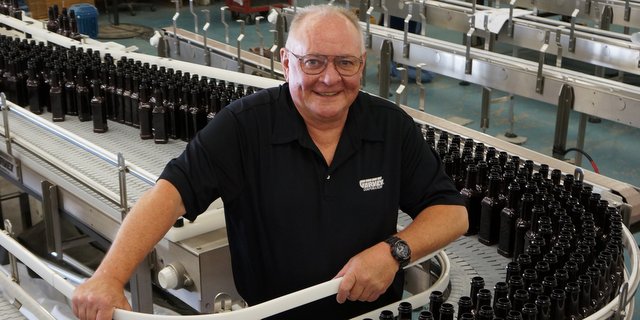|
By Keith Gibbons (as found on www.craftbrewingbusiness.com)
The science of commercial beer goes beyond the chemistry of brewing. The process of packaging it is an equally impressive engineering feat, requiring bottling, canning, kegging, labeling, sorting, accumulating, boxing, palletizing, shipping and so much more in between. Visit a packaging and distribution center at a brewery like New Belgium Brewing Co. and the automation of the packaging process can look a little like an ultra-complex Rube Goldberg Machine. As craft breweries grow, their bottling, canning and packaging lines will become interconnected chains of automated systems ranging from filling lines and labelers to bottle conveyors and case erectors. The process of engineering and re-engineering these packaging lines (as brewers grow) can be quite complex and expensive. To help prepare upcoming brew barons for their future packaging needs, we tapped the big brains of some of the industry’s most successful craft brewers and some of the industry’s most well-respected manufacturing brands. Those awesome insights are below, ranging from production systems engineering to packaging hall design. We raise a hearty toast of thanks to everyone involved. The importance of preventive maintenance Matt Smith, packaging manager Ninkasi Brewing Co. (Eugene, Ore.) Whether you own a shiny brand new packaging line or a boneyard of random packaging equipment, there is one important item to keep focus on. That item is preventive maintenance. It’s the only way to avoid machine failure and to help prevent future breakdowns. Greasing the same zerks every week may seem redundant at times, but something so small will help ensure the longevity of your packaging equipment. Initiating a preventive maintenance schedule is fairly easy to create and implement. A good place to start is to go through all of the current machine manuals on hand, and review and record the recommended maintenance schedules listed in those manuals. An even better idea would be to call the machine manufacturer just to make sure all of the information in the manual is accurate and up to date. If no manual can be found, then contacting the machine manufacturer is the best option for replacement. Gather all the information you can and make a specific three-ring binder for each machine with all of the scheduled repairs and overhauls listed very clearly for the operators to understand. This will also help maintenance personnel know which machine needs attention and how frequently. Setting a specific date every week or month for scheduled maintenance is another great way to ensure your packaging equipment will last and perform how you need it to. Staying on top of preventive maintenance will not only prolong machinery life but will also improve the quality of the product you are packaging. Cheers! READ THE FULL ARTICLE HERE
1 Comment
3/7/2022 05:09:57 pm
It's awesome that this article talked about the importance of keeping your packaging simple for a more productive time. My uncle mentioned to me last night that his friend is looking for a print folder gluer
Reply
Your comment will be posted after it is approved.
Leave a Reply. |
WinStar
|
|
© 2024 WinStar Insurance Group
13625 Ronald W. Reagan Blvd. Building 3, Suite 100 Cedar Park, TX 78613 |
IMPORTANT NOTE: This Web site provides only a simplified description of coverages and is not a statement of contract. Coverage may not apply in all states. For complete details of coverages, conditions, limits and losses not covered, be sure to read the policy, including all endorsements, or prospectus, if applicable. Coverage CANNOT be bound, amended, or altered by leaving a message on, or relying upon, information in this Website or through E-Mail.
Licensed & doing business in the following states only: Texas, New Mexico, & Oklahoma
Licensed & doing business in the following states only: Texas, New Mexico, & Oklahoma


 RSS Feed
RSS Feed


